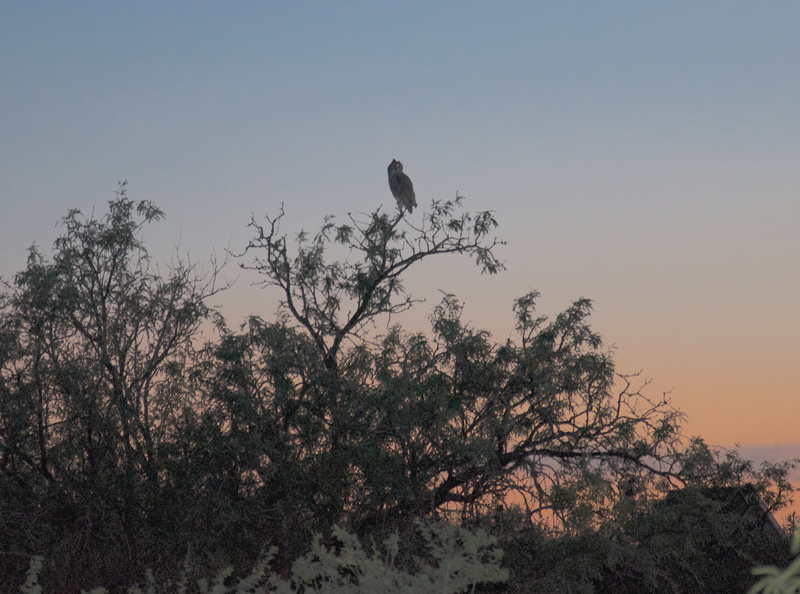Owl, Moon, Comet C/2013 A1 Siding Spring
Posted: 4 October 2014
|
Opened: Friday, 3 October 2014, 1814 MST Temperature: 86°F |
Session: 725 Conditions: High thin clouds in much of sky |
1823 MST: quick look at the moon, 83X. Then began preparing to do iPhone afocal imaging of the moon. As I was doing that I saw this owl just south of the observatory:

At 1829 MST I captured this image of the waxing gibbous moon using the iPhone 5s on the 8" LX200-ACF, afocal 77X, modified MX-1 Afocal Adapter, Camera app, Earbuds/Mic remote shutter release:

I then began preparing to image Comet C/2013 A1 Siding Spring at 8" prime focus. I first slewed to NGC6441 (globular cluster) to check how close it would be to the comet. The cluster was not yet visible against the bright twilight sky. Also, there were some thin clouds in the sky at that location. Using the GC Wi-Fi Adapter and SkySafari Pro 4.1 I then did a GOTO the comet; unfortunately, it was too far distant from the globular cluster to image both together. 1850 MST: focus test image using Antares and a Bahtinov Mask. 1853 MST: slewed to the comet and did a test image at 30 seconds, ISO 2500. The comet was faintly visible against a pale blue sky. I did a series of exposures 5 minutes apart from 1900 MST to 1940 MST. The best images (darkest sky) were from 1910 MST to 1940 MST. Those seven images were stacked to created an animated video of the comet's movement as it moved northward in the sky in 30 minutes:

Mouseover or tap on image to see animated version (takes a few seconds to load)
I removed the camera and tried to view the comet using 83X. At 1944 MST I thought I might have detected the comet as a faint fuzzy but star-like object. Switched to 222X and began watching for any movement against background stars. No movement was detected after 15 minutes so gave up. The comet was now too low in the sky anyway.
2003 MST: back to the moon for some lunar observing, 222X. Seeing was not good as thin clouds were still in the sky. Crater Tycho was a nice view at times. This handheld iPhone 5s photo, afocal 222X, shows Tycho (top center) and Clavius (bottom center):

2011-2035 MST: did some software beta testing.
2037 MST: final look at the moon, 83X.
|
Closed: Friday, 3 October 2014, 2049 MST Temperature: 70°F |
|
I will be at the GLOW event Saturday night, 4 October, representing the Oracle Dark Skies Committee. I will have my ETX-105PE set up to provide visitors views of the moon.
Comments are welcome using Email. If you are on Twitter you can use the button below to tweet this report to your followers. Thanks.
Cassiopeia Observatory Home Page
Copyright ©2014 Michael L. Weasner / mweasner@me.com
URL = http://www.weasner.com/co/Reports/2014/10/04/index.html
